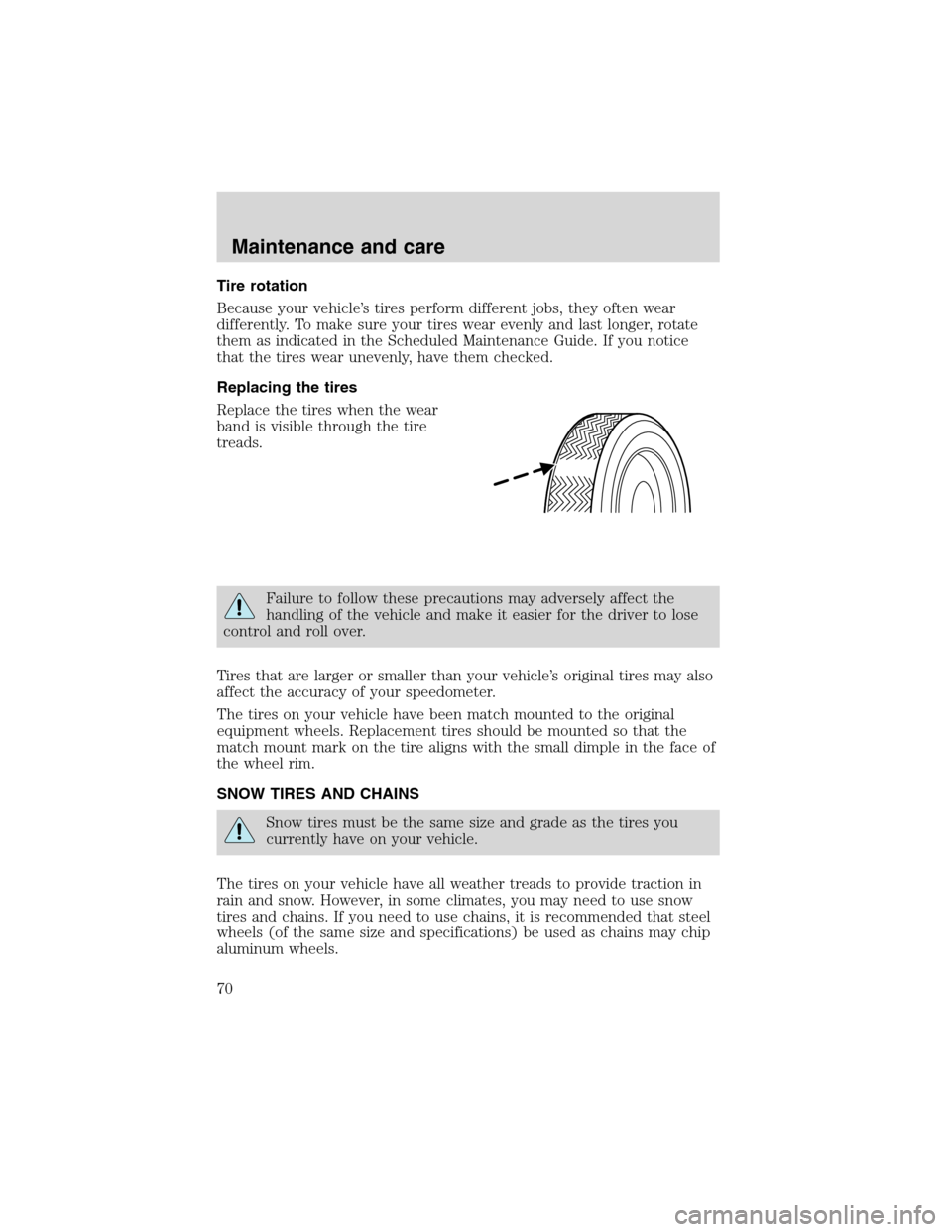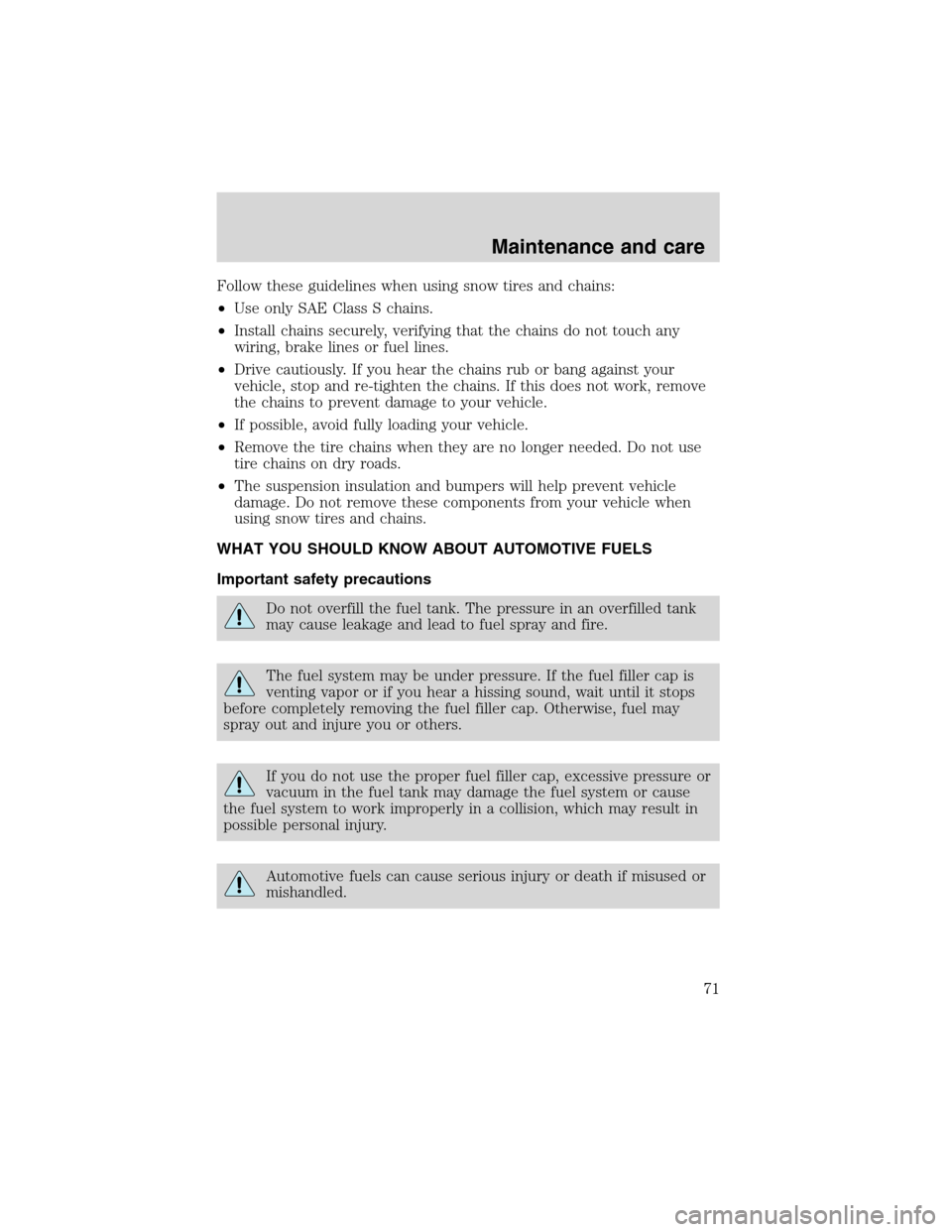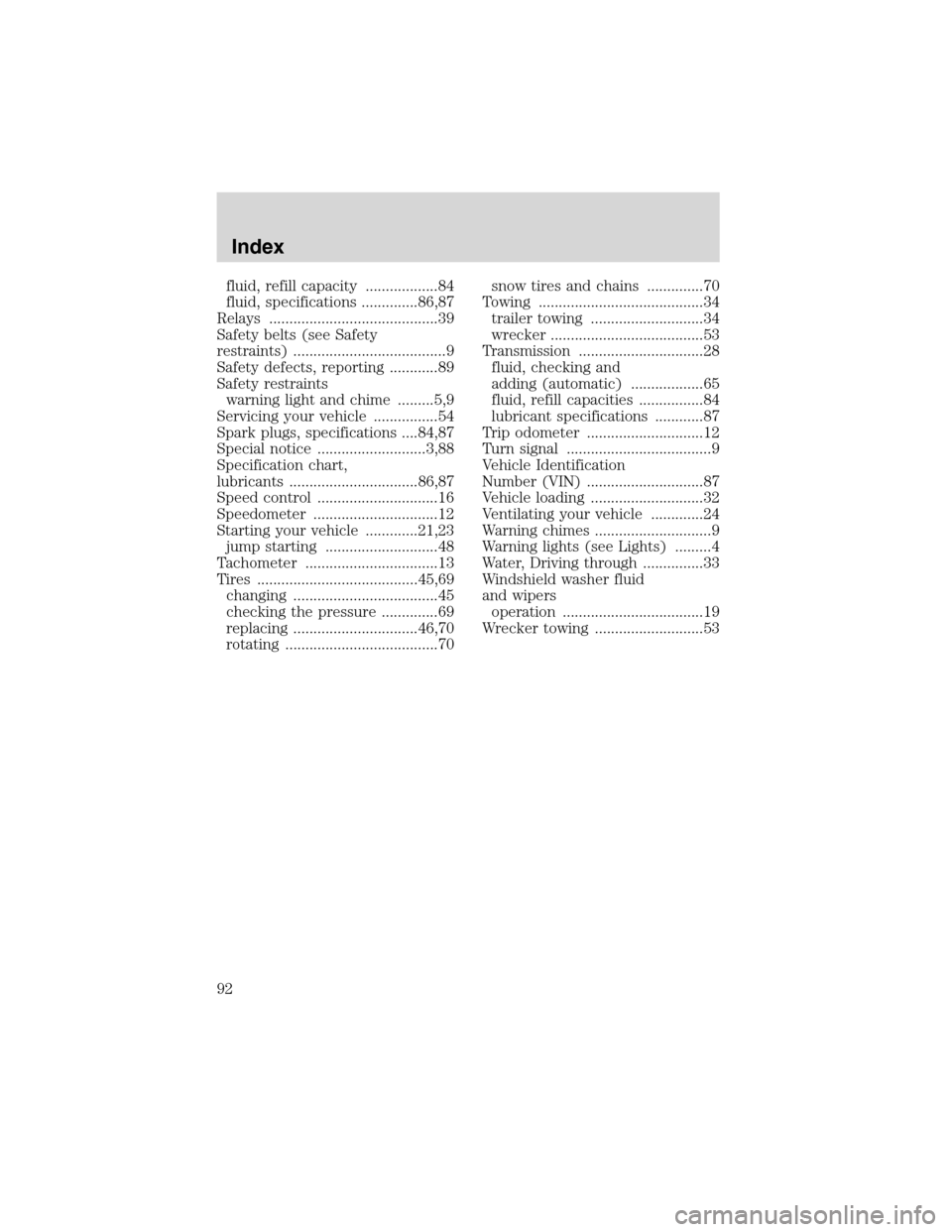snow chains FORD F SERIES MOTORHOME AND COMMERCIAL CHASSIS 1999 10.G Owners Manual
[x] Cancel search | Manufacturer: FORD, Model Year: 1999, Model line: F SERIES MOTORHOME AND COMMERCIAL CHASSIS, Model: FORD F SERIES MOTORHOME AND COMMERCIAL CHASSIS 1999 10.GPages: 96, PDF Size: 0.57 MB
Page 70 of 96

Tire rotation
Because your vehicle’s tires perform different jobs, they often wear
differently. To make sure your tires wear evenly and last longer, rotate
them as indicated in the Scheduled Maintenance Guide. If you notice
that the tires wear unevenly, have them checked.
Replacing the tires
Replace the tires when the wear
band is visible through the tire
treads.
Failure to follow these precautions may adversely affect the
handling of the vehicle and make it easier for the driver to lose
control and roll over.
Tires that are larger or smaller than your vehicle’s original tires may also
affect the accuracy of your speedometer.
The tires on your vehicle have been match mounted to the original
equipment wheels. Replacement tires should be mounted so that the
match mount mark on the tire aligns with the small dimple in the face of
the wheel rim.
SNOW TIRES AND CHAINS
Snow tires must be the same size and grade as the tires you
currently have on your vehicle.
The tires on your vehicle have all weather treads to provide traction in
rain and snow. However, in some climates, you may need to use snow
tires and chains. If you need to use chains, it is recommended that steel
wheels (of the same size and specifications) be used as chains may chip
aluminum wheels.
Maintenance and care
70
Page 71 of 96

Follow these guidelines when using snow tires and chains:
•Use only SAE Class S chains.
•Install chains securely, verifying that the chains do not touch any
wiring, brake lines or fuel lines.
•Drive cautiously. If you hear the chains rub or bang against your
vehicle, stop and re-tighten the chains. If this does not work, remove
the chains to prevent damage to your vehicle.
•If possible, avoid fully loading your vehicle.
•Remove the tire chains when they are no longer needed. Do not use
tire chains on dry roads.
•The suspension insulation and bumpers will help prevent vehicle
damage. Do not remove these components from your vehicle when
using snow tires and chains.
WHAT YOU SHOULD KNOW ABOUT AUTOMOTIVE FUELS
Important safety precautions
Do not overfill the fuel tank. The pressure in an overfilled tank
may cause leakage and lead to fuel spray and fire.
The fuel system may be under pressure. If the fuel filler cap is
venting vapor or if you hear a hissing sound, wait until it stops
before completely removing the fuel filler cap. Otherwise, fuel may
spray out and injure you or others.
If you do not use the proper fuel filler cap, excessive pressure or
vacuum in the fuel tank may damage the fuel system or cause
the fuel system to work improperly in a collision, which may result in
possible personal injury.
Automotive fuels can cause serious injury or death if misused or
mishandled.
Maintenance and care
71
Page 92 of 96

fluid, refill capacity ..................84
fluid, specifications ..............86,87
Relays ..........................................39
Safety belts (see Safety
restraints) ......................................9
Safety defects, reporting ............89
Safety restraints
warning light and chime .........5,9
Servicing your vehicle ................54
Spark plugs, specifications ....84,87
Special notice ...........................3,88
Specification chart,
lubricants ................................86,87
Speed control ..............................16
Speedometer ...............................12
Starting your vehicle .............21,23
jump starting ............................48
Tachometer .................................13
Tires ........................................45,69
changing ....................................45
checking the pressure ..............69
replacing ...............................46,70
rotating ......................................70snow tires and chains ..............70
Towing .........................................34
trailer towing ............................34
wrecker ......................................53
Transmission ...............................28
fluid, checking and
adding (automatic) ..................65
fluid, refill capacities ................84
lubricant specifications ............87
Trip odometer .............................12
Turn signal ....................................9
Vehicle Identification
Number (VIN) .............................87
Vehicle loading ............................32
Ventilating your vehicle .............24
Warning chimes .............................9
Warning lights (see Lights) .........4
Water, Driving through ...............33
Windshield washer fluid
and wipers
operation ...................................19
Wrecker towing ...........................53
Index
92